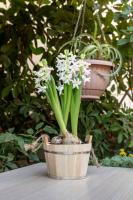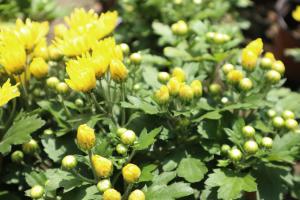Introduction
Carob trees are an ancient, evergreen tree that grows in the Mediterranean region. They are known for their sweet, edible pods, and are commonly used in the production of carob powder. If you're looking to plant carob trees, one of the most important considerations is the distance between each tree. In this article, we'll explore how far apart to plant carob trees and why it matters.
Spacing for Carob Trees
The ideal spacing between carob trees is largely dependent on the variety, the growing conditions, and the intended purpose of the trees. In general, however, most recommendations suggest spacing carob trees at least 25-30 feet apart.
It's also important to consider the overall layout of your carob tree orchard. If you're planting in rows, trees should be spaced approximately 15-20 feet apart within the row, and about 30 feet between rows. On sloping terrain, plant trees in a contour, with the terraces spaced about 20 feet apart.
Why Spacing is Important
Proper spacing is critical to the long-term health and productivity of your carob tree orchard. Overcrowding can lead to increased competition for resources like water and nutrients, as well as increased susceptibility to disease and pest problems. Trees that are too close together can also exhibit poor growth habits, with weaker, less productive branches.
On the other hand, wider spacing allows for better air circulation between trees, reducing the risk of fungal diseases, and allowing more light to penetrate and reach the lower branches of the tree. This can lead to stronger, healthier trees with better yields and higher-quality fruit.
Factors to Consider
When deciding how far apart to plant your carob trees, there are several factors to consider, including:
Variety: Different varieties may have different growth habits and size requirements. Be sure to research the specific variety you're planting to determine the ideal spacing.
Site conditions: Soil type, elevation, and climate can all impact tree growth and spacing requirements. In areas with high winds, for example, wider spacing may be necessary to prevent tree damage.
Purpose: Are you planting trees for fruit production, timber, or aesthetic reasons? The intended use of your orchard can impact the ideal spacing between trees.
Caring for Your Carob Trees
Once your carob trees are established, it's important to care for them properly to ensure maximum fruit production and long-term health. Regular pruning and training can help promote strong, productive trees. Additionally, proper irrigation and fertilization can help ensure that trees have the resources they need to thrive.
While carob trees are relatively hardy, they can be susceptible to a range of pests and diseases. Regular monitoring and prompt treatment can help mitigate these risks and preserve the health of your orchard.
Conclusion
Planting carob trees can be a rewarding experience, whether you're growing them for their sweet fruit or as an ornamental tree. By carefully considering spacing requirements, site conditions, and other factors, you can help ensure that your trees thrive and produce high-quality fruit for years to come.

 how many times do yo...
how many times do yo... how many planted tre...
how many planted tre... how many pine trees ...
how many pine trees ... how many pecan trees...
how many pecan trees... how many plants comp...
how many plants comp... how many plants can ...
how many plants can ... how many plants and ...
how many plants and ... how many pepper plan...
how many pepper plan...






























